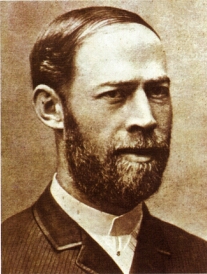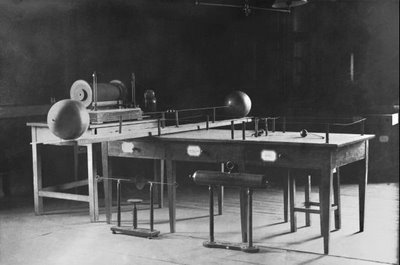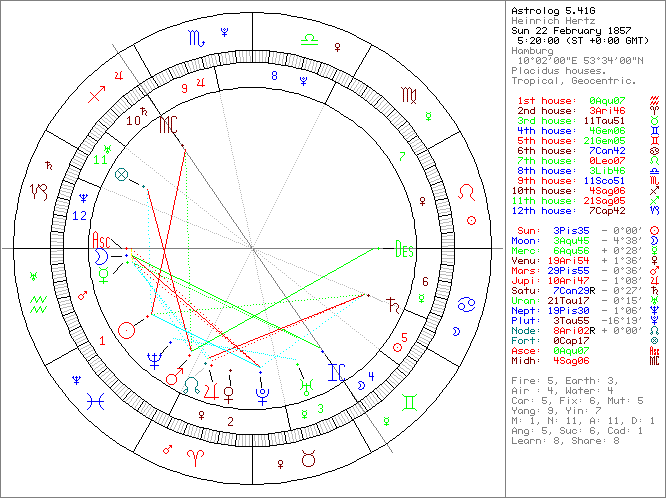


Planet
|
Longitude
|
Latitude
|
Declin.
|
Const.
|
H.D.
|
Period
|
Inclin.
|
O. Range
|
Ascend
|
0Aq07
|
0n00
|
20s09
|
Cap
|
||||
Bienor
|
0Aq35
|
12s20
|
32s03
|
Mic
|
19.7
|
67
|
20.7
|
13.3->19.8
|
BU48
|
0Sc40 r
|
14n10
|
1n35
|
Vir
|
43.8
|
191
|
14.3
|
20.3->46.0
|
Hylonome
|
1Le21 r
|
3s29
|
16n29
|
Cnc
|
20.9
|
125
|
4.2
|
18.9->31.2
|
Pelion
|
1Ca30 r
|
5s08
|
18n20
|
Ori
|
22.7
|
90
|
9.4
|
17.5->22.7
|
DA62
|
1Cp34
|
41s24
|
64s50
|
Pav
|
5.5
|
21
|
52.3
|
4.1->11.2
|
YQ179
|
2Ar04
|
20s01
|
17s29
|
Cet
|
99.9
|
844
|
20.9
|
37.7->140.
|
Thereus
|
2Pi12
|
14n42
|
3n03
|
Peg
|
9.5
|
38
|
20.2
|
8.9->13.7
|
Radamantus
|
2Aq43
|
11s27
|
30s41
|
Mic
|
43.7
|
244
|
12.7
|
33.0->45.1
|
Elatus
|
2Cp50
|
0s04
|
23s30
|
Sgr
|
12.1
|
45
|
5.5
|
7.5->17.9
|
SB60
|
2Le54 r
|
11s03
|
8n45
|
Cnc
|
42.5
|
272
|
23.9
|
37.7->46.4
|
Okyrhoe
|
3Ta00
|
10s45
|
2n25
|
Cet
|
8.3
|
23
|
15.8
|
6.0->10.4
|
VQ94
|
3Ar12
|
53s59
|
46s48
|
Phe
|
137.7
|
2624
|
70.0
|
6.9->373.6
|
QD112
|
3Ge34
|
13n23
|
34n00
|
Per
|
26.2
|
83
|
14.5
|
8.0->30.1
|
Sun
|
3Pi35
|
0n00
|
10s12
|
Aqr
|
1.0
|
1
|
0.0
|
|
GQ21
|
3Ge43
|
10s38
|
10n27
|
Tau
|
90.2
|
906
|
13.3
|
38.7->148.
|
Moon
|
3Aq45
|
4s38
|
23s49
|
Cap
|
1.0
|
0
|
5.2
|
|
LE31
|
3Ar53
|
24s31
|
20s52
|
Cet
|
7.7
|
23
|
152.6
|
4.3->11.9
|
Pluto
|
3Ta55
|
16s19
|
2s33
|
Cet
|
49.2
|
250
|
17.1
|
30.1->49.3
|
FY9
|
4Pi02
|
27s39
|
35s28
|
Scl
|
39.3
|
310
|
29.0
|
38.2->53.4
|
Midheav
|
4Sa06
|
0n00
|
20s59
|
Sco
|
||||
SA278
|
4Aq20
|
11n27
|
8s03
|
Aql
|
110.6
|
894
|
16.2
|
33.1->152.
|
Asbolus
|
5Ta00
|
9n43
|
22n20
|
Ari
|
13.5
|
77
|
17.6
|
6.9->29.2
|
Eris
|
5Pi15
|
39s05
|
45s03
|
Phe
|
84.0
|
560
|
43.9
|
38.4->97.5
|
OO67
|
5Sc50 r
|
19n30
|
4n58
|
Vir
|
135.0
|
13518
|
20.1
|
20.4->1114
|
96PW
|
5Vi50 r
|
7n25
|
16n16
|
Leo
|
138.8
|
3527
|
30.2
|
2.4->461.0
|
GV9
|
6Ar19
|
19n12
|
20n03
|
Peg
|
45.2
|
274
|
22.0
|
39.3->45.2
|
RP120
|
6Sc28 r
|
1s59
|
15s33
|
Vir
|
102.6
|
416
|
120.1
|
2.5->108.9
|
Node
|
6Ar36 r
|
0n00
|
2n37
|
Psc
|
||||
Mercury
|
6Aq56
|
0n28
|
18s07
|
Cap
|
0.4
|
0
|
7.0
|
|
Vertex
|
7Vi02
|
|||||||
RN43
|
7Le03 r
|
16s46
|
2n17
|
Hya
|
42.1
|
268
|
19.3
|
40.5->42.6
|
Pylenor
|
7Ar11
|
4s08
|
0s56
|
Cet
|
14.3
|
69
|
5.5
|
11.7->21.9
|
TO66
|
7Vi20 r
|
8n19
|
16n32
|
Leo
|
41.7
|
284
|
27.5
|
38.2->48.2
|
Saturn
|
7Ca29 r
|
0s27
|
22n48
|
Gem
|
9.0
|
30
|
2.5
|
|
Chiron
|
8Aq15
|
6n32
|
11s55
|
Aqr
|
14.3
|
49
|
7.0
|
8.4->18.3
|
Chariklo
|
8Ta42
|
22n20
|
35n22
|
And
|
17.6
|
63
|
23.4
|
13.2->18.5
|
Nessus
|
8Ca46 r
|
15n21
|
38n29
|
Aur
|
19.3
|
122
|
15.6
|
11.8->37.4
|
CF119
|
9Ar22
|
18n15
|
20n25
|
Peg
|
95.9
|
848
|
19.7
|
39.2->139.
|
CY118
|
9Ta24
|
22s12
|
6s28
|
Eri
|
97.5
|
866
|
25.5
|
35.1->146.
|
EL61
|
9Ar36
|
26s16
|
20s16
|
Cet
|
34.8
|
287
|
28.2
|
34.7->52.3
|
Deucalion
|
9Ta54
|
0s04
|
14n44
|
Ari
|
44.8
|
296
|
0.4
|
41.7->47.1
|
QB1
|
9Li55 r
|
0s27
|
4s20
|
Vir
|
46.9
|
289
|
2.2
|
40.5->46.9
|
Typhon
|
10Aq06
|
1s32
|
19s12
|
Cap
|
54.5
|
232
|
2.4
|
17.6->58.0
|
GM137
|
10Ge32
|
4s34
|
17n31
|
Tau
|
8.3
|
23
|
15.6
|
7.2->9.0
|
CR105
|
10Pi40
|
13s13
|
19s45
|
Aqr
|
92.3
|
3469
|
22.8
|
44.3->414.
|
OM67
|
10Li43 r
|
17s11
|
19s58
|
Crv
|
91.0
|
964
|
23.4
|
38.8->156.
|
Jupiter
|
10Ar47
|
1s08
|
3n14
|
Psc
|
5.0
|
12
|
1.3
|
|
Crantor
|
11Pi13
|
8s51
|
15s32
|
Aqr
|
22.2
|
86
|
12.8
|
14.2->24.8
|
CE10
|
11Sc30 r
|
34s14
|
47s14
|
Cen
|
13.8
|
31
|
145.4
|
2.1->17.5
|
MS4
|
11Ge38
|
11s27
|
10n51
|
Ori
|
35.7
|
273
|
17.7
|
35.7->48.4
|
XX143
|
11Le50 r
|
3n35
|
20n42
|
Cnc
|
26.2
|
76
|
6.8
|
9.6->26.3
|
Quaoar
|
11Ge52r
|
7s22
|
14n56
|
Ori
|
43.2
|
288
|
8.0
|
41.9->45.3
|
BL41
|
12Sc06r
|
12s28
|
27s18
|
Hya
|
12.5
|
31
|
13.3
|
7.1->12.6
|
TX300
|
12Vi18 r
|
9s24
|
1s44
|
Sex
|
46.9
|
283
|
25.9
|
37.8->48.5
|
MW12
|
12Ca23r
|
21s26
|
1n32
|
Mon
|
45.5
|
311
|
21.5
|
39.3->52.5
|
Ceto
|
12Pi25
|
3n02
|
4s06
|
Aqr
|
106.8
|
1026
|
22.2
|
18.0->185.
|
PA44
|
13Ge06r
|
2s22
|
20n03
|
Tau
|
18.2
|
52
|
3.3
|
3.4->24.6
|
XR190
|
13Aq20
|
42n37
|
24n05
|
Vul
|
60.6
|
435
|
46.7
|
53.0->61.7
|
RD215
|
15Sc08r
|
7n48
|
8s56
|
Lib
|
97.7
|
1345
|
26.1
|
37.2->206.
|
VU2
|
15Li32 r
|
13s56
|
18s55
|
Crv
|
6.7
|
18
|
13.8
|
3.1->10.7
|
FZ53
|
16Ar03
|
1n52
|
8n02
|
Psc
|
22.9
|
117
|
34.8
|
12.5->35.3
|
UX25
|
16Sc05r
|
7n39
|
9s19
|
Lib
|
43.5
|
277
|
19.5
|
36.4->48.5
|
CO104
|
16Ta14
|
2n32
|
19n08
|
Ari
|
23.0
|
119
|
3.1
|
20.7->27.7
|
PB112
|
17Sc04r
|
12s15
|
28s39
|
Hya
|
105.5
|
1111
|
15.5
|
34.9->179.
|
PJ30
|
17Ca14r
|
0n25
|
22n45
|
Gem
|
94.6
|
1351
|
5.6
|
28.8->215.
|
Apogee
|
18Li30 r
|
1s05
|
8s15
|
Vir
|
||||
TD10
|
18Li53 r
|
1n36
|
5s55
|
Vir
|
115.0
|
926
|
6.0
|
12.0->178.
|
Orcus
|
19Sa02
|
3s21
|
26s21
|
Oph
|
36.3
|
246
|
20.6
|
30.4->48.1
|
RG33
|
19Ge06r
|
33n09
|
56n00
|
Cam
|
12.1
|
29
|
35.8
|
2.2->16.8
|
OX3
|
19Ca10r
|
1s30
|
20n36
|
Gem
|
21.8
|
183
|
3.2
|
17.5->46.9
|
XA255
|
19Cp14
|
0s26
|
22s31
|
Sgr
|
16.3
|
161
|
12.7
|
9.4->49.9
|
Neptune
|
19Pi30
|
1s06
|
5s11
|
Aqr
|
29.9
|
166
|
1.8
|
|
Teharonhi
|
19Le38 r
|
0s48
|
14n11
|
Leo
|
43.1
|
292
|
2.6
|
42.9->45.1
|
TY364
|
19Vi47 r
|
13n42
|
16n37
|
Leo
|
36.7
|
241
|
24.9
|
36.2->41.2
|
Venus
|
19Ar54
|
1n36
|
9n16
|
Psc
|
0.7
|
1
|
3.4
|
|
QB243
|
20Ta11
|
6n42
|
24n15
|
Ari
|
49.8
|
205
|
6.8
|
15.4->54.2
|
TC302
|
20Cp39
|
34s41
|
55s55
|
Tel
|
71.5
|
411
|
35.0
|
39.1->71.5
|
UJ438
|
21Ar01
|
3n06
|
11n05
|
Psc
|
12.1
|
75
|
3.8
|
8.3->27.2
|
Uranus
|
21Ta17
|
0s15
|
17n51
|
Ari
|
19.5
|
85
|
0.8
|
|
OP32
|
21Ca20r
|
25s58
|
3s55
|
Mon
|
46.5
|
285
|
27.2
|
38.9->47.7
|
RL43
|
21Cp42
|
9n16
|
12s33
|
Sgr
|
23.6
|
121
|
12.3
|
23.4->25.6
|
KX14
|
21Ar47
|
0n23
|
8n51
|
Psc
|
37.2
|
245
|
0.4
|
37.0->41.2
|
AZ84
|
21Sa50
|
2n25
|
20s47
|
Oph
|
32.4
|
247
|
13.6
|
32.4->46.3
|
Ixion
|
22Ge05r
|
5n10
|
28n23
|
Tau
|
35.0
|
251
|
19.6
|
29.9->49.6
|
Huya
|
22Ar45
|
9s12
|
0n18
|
Cet
|
47.8
|
250
|
15.5
|
28.9->50.4
|
UR163
|
23Vi06 r
|
0s37
|
2n11
|
Vir
|
52.6
|
367
|
0.7
|
36.8->65.8
|
HB57
|
23Ge15r
|
14s28
|
8n50
|
Ori
|
113.0
|
2015
|
15.5
|
38.5->280.
|
Varuna
|
23Sa25
|
4n00
|
19s18
|
Oph
|
43.3
|
281
|
17.2
|
40.4->45.3
|
Chaos
|
23Sa41
|
6s51
|
30s09
|
Sco
|
50.0
|
308
|
12.1
|
40.8->50.4
|
XZ255
|
23Pi46
|
2s26
|
4s43
|
Aqr
|
15.3
|
64
|
2.6
|
15.3->16.7
|
RR43
|
24Li15 r
|
25n39
|
14n28
|
Boo
|
48.9
|
282
|
28.5
|
36.9->49.2
|
VS2
|
24Li25 r
|
14s53
|
23s15
|
Hya
|
41.9
|
246
|
14.8
|
36.1->42.4
|
RZ214
|
24Li27 r
|
3s13
|
12s28
|
Vir
|
83.7
|
772
|
20.6
|
36.3->132.
|
TL66
|
24Sa33
|
18n17
|
5s05
|
Oph
|
92.5
|
763
|
24.1
|
34.8->132.
|
Echeclus
|
24Le42 r
|
2s12
|
11n13
|
Leo
|
15.1
|
34
|
4.4
|
5.7->15.2
|
Amycus
|
25Ge11r
|
9n51
|
33n12
|
Aur
|
23.7
|
126
|
13.3
|
15.3->34.9
|
CC22
|
25Pi15
|
0s33
|
2s23
|
Psc
|
9.4
|
20
|
11.1
|
5.4->9.4
|
Pholus
|
25Cp22
|
1n28
|
19s39
|
Sgr
|
31.7
|
91
|
24.7
|
8.7->31.8
|
VR130
|
25Sa29
|
3n28
|
19s55
|
Sgr
|
28.0
|
117
|
3.5
|
14.7->33.1
|
AW197
|
25Pi48
|
21n12
|
17n44
|
Peg
|
50.3
|
327
|
24.4
|
41.6->53.4
|
WL7
|
25Li49 r
|
4s09
|
13s51
|
Vir
|
22.6
|
90
|
11.2
|
14.9->25.3
|
KF77
|
26Vi18 r
|
1n20
|
2n42
|
Vir
|
25.9
|
132
|
4.3
|
19.7->32.0
|
GZ32
|
26Ge25r
|
4s36
|
18n48
|
Ori
|
28.0
|
111
|
15.0
|
18.1->28.0
|
FP185
|
26Ta43
|
27s16
|
7s09
|
Eri
|
117.5
|
3205
|
30.7
|
34.7->400.
|
GB32
|
27Ge18r
|
14s14
|
9n12
|
Ori
|
121.9
|
2968
|
14.2
|
35.7->377.
|
DH5
|
27Aq33
|
3n05
|
9s26
|
Aqr
|
28.6
|
104
|
22.5
|
14.0->30.1
|
RM43
|
28Sa01
|
2s37
|
26s04
|
Sgr
|
96.9
|
865
|
28.9
|
34.9->146.
|
Sedna
|
28Pi06
|
7s01
|
7s11
|
Cet
|
151.7
|
12390
|
11.9
|
76.8->994.
|
Logos
|
28Aq18
|
0s51
|
12s52
|
Aqr
|
48.9
|
306
|
2.9
|
40.0->50.7
|
WN188
|
28Aq32
|
12s01
|
23s13
|
Aqr
|
23.3
|
54
|
26.9
|
2.2->26.4
|
CZ118
|
28Ge47r
|
26n54
|
50n21
|
Aur
|
114.3
|
1234
|
27.8
|
38.1->192.
|
Cyllarus
|
29Pi10
|
9s09
|
8s43
|
Cet
|
16.3
|
136
|
12.6
|
16.3->36.6
|
PN34
|
29Ta16
|
13n53
|
33n32
|
Per
|
30.8
|
174
|
16.6
|
13.4->48.9
|
FZ173
|
29Ta25
|
10n59
|
30n45
|
Per
|
98.7
|
792
|
12.7
|
32.9->138.
|
SQ73
|
29Ar25
|
5n15
|
16n11
|
Ari
|
16.5
|
75
|
17.5
|
14.7->20.8
|
CO1
|
29Pi32
|
18s38
|
17s14
|
Cet
|
29.8
|
94
|
19.7
|
11.0->30.4
|
RZ215
|
29Vi48 r
|
9s17
|
8s26
|
Crt
|
101.2
|
1015
|
25.6
|
30.6->171.
|
QF6
|
29Vi51 r
|
14n37
|
13n26
|
Vir
|
10.3
|
19
|
23.8
|
2.2->12.1
|
Mars
|
29Pi55
|
0s36
|
0s35
|
Psc
|
1.4
|
2
|
1.9
|
Planet
|
Longitude
|
Huya
|
0Ar01
|
UR163
|
0Vi21 r
|
HB57
|
0Ge30 r
|
Varuna
|
0Sa40
|
Chaos
|
0Sa56
|
XZ255
|
1Pi01
|
RR43
|
1Li30 r
|
VS2
|
1Li40 r
|
RZ214
|
1Li42 r
|
TL66
|
1Sa48
|
Echeclus
|
1Le58 r
|
Amycus
|
2Ge26 r
|
CC22
|
2Pi30
|
Pholus
|
2Cp38
|
VR130
|
2Sa44
|
AW197
|
3Pi03
|
WL7
|
3Li04 r
|
KF77
|
3Vi33 r
|
GZ32
|
3Ge40 r
|
FP185
|
3Ta58
|
GB32
|
4Ge33 r
|
DH5
|
4Aq49
|
RM43
|
5Sa16
|
Sedna
|
5Pi21
|
Logos
|
5Aq34
|
WN188
|
5Aq47
|
CZ118
|
6Ge03 r
|
Cyllarus
|
6Pi25
|
PN34
|
6Ta31
|
FZ173
|
6Ta40
|
SQ73
|
6Ar40
|
CO1
|
6Pi48
|
RZ215
|
7Vi03 r
|
QF6
|
7Vi07 r
|
Mars
|
7Pi10
|
Ascend
|
7Cp22
|
Bienor
|
7Cp50
|
BU48
|
7Li55 r
|
Hylonome
|
8Ca36 r
|
Pelion
|
8Ge46 r
|
DA62
|
8Sa49
|
YQ179
|
9Pi20
|
Thereus
|
9Aq27
|
Radamantus
|
9Cp59
|
Elatus
|
10Sa06
|
SB60
|
10Ca09r
|
Okyrhoe
|
10Ar16
|
VQ94
|
10Pi27
|
QD112
|
10Ta49
|
Sun
|
10Aq50
|
GQ21
|
10Ta59
|
Moon
|
11Cp01
|
LE31
|
11Pi09
|
Pluto
|
11Ar10
|
FY9
|
11Aq17
|
Midheav
|
11Sc21
|
SA278
|
11Cp35
|
Asbolus
|
12Ar16
|
Eris
|
12Aq30
|
OO67
|
13Li05 r
|
96PW
|
13Le05 r
|
GV9
|
13Pi34
|
RP120
|
13Li43 r
|
Node
|
13Pi51 r
|
Mercury
|
14Cp11
|
Vertex
|
14Le18
|
RN43
|
14Ca18r
|
Pylenor
|
14Pi26
|
TO66
|
14Le36 r
|
Saturn
|
14Ge44r
|
Chiron
|
15Cp30
|
Chariklo
|
15Ar57
|
Nessus
|
16Ge01r
|
CF119
|
16Pi37
|
CY118
|
16Ar40
|
EL61
|
16Pi51
|
Deucalion
|
17Ar09
|
QB1
|
17Vi10 r
|
Typhon
|
17Cp21
|
GM137
|
17Ta47
|
CR105
|
17Aq56
|
OM67
|
17Vi58 r
|
Jupiter
|
18Pi02
|
Crantor
|
18Aq28
|
CE10
|
18Li45 r
|
MS4
|
18Ta53
|
XX143
|
19Ca05r
|
Quaoar
|
19Ta07 r
|
BL41
|
19Li21 r
|
TX300
|
19Le33 r
|
MW12
|
19Ge38r
|
Ceto
|
19Aq40
|
PA44
|
20Ta21 r
|
XR190
|
20Cp35
|
RD215
|
22Li23 r
|
VU2
|
22Vi47 r
|
FZ53
|
23Pi18
|
UX25
|
23Li20 r
|
CO104
|
23Ar29
|
PB112
|
24Li20 r
|
PJ30
|
24Ge30r
|
Apogee
|
25Vi45 r
|
TD10
|
26Vi08 r
|
Orcus
|
26Sc17
|
RG33
|
26Ta21 r
|
OX3
|
26Ge26r
|
XA255
|
26Sa29
|
Neptune
|
26Aq45
|
Teharonhi
|
26Ca53r
|
TY364
|
27Le03 r
|
Venus
|
27Pi09
|
QB243
|
27Ar26
|
TC302
|
27Sa55
|
UJ438
|
28Pi16
|
Uranus
|
28Ar32
|
OP32
|
28Ge35r
|
RL43
|
28Sa58
|
KX14
|
29Pi02
|
AZ84
|
29Sc05
|
Ixion
|
29Ta21 r
|